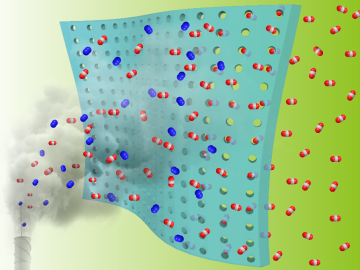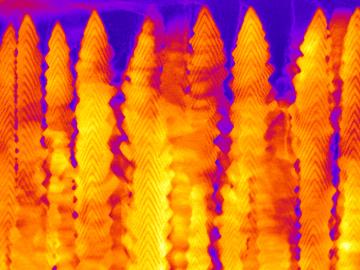
Filter News
Area of Research
- Advanced Manufacturing (4)
- Biological Systems (1)
- Biology and Environment (4)
- Computer Science (3)
- Energy Science (43)
- Fusion and Fission (3)
- Fusion Energy (9)
- Materials (60)
- Materials for Computing (3)
- National Security (8)
- Neutron Science (15)
- Nuclear Science and Technology (11)
- Quantum information Science (3)
- Supercomputing (16)
- Transportation Systems (1)
News Topics
- (-) Bioenergy (24)
- (-) Cybersecurity (12)
- (-) Fusion (22)
- (-) Grid (15)
- (-) Materials Science (67)
- 3-D Printing/Advanced Manufacturing (48)
- Advanced Reactors (22)
- Artificial Intelligence (21)
- Big Data (19)
- Biology (6)
- Biomedical (32)
- Biotechnology (3)
- Buildings (1)
- Chemical Sciences (5)
- Clean Water (8)
- Composites (6)
- Computer Science (88)
- Coronavirus (25)
- Critical Materials (3)
- Energy Storage (31)
- Environment (51)
- Exascale Computing (5)
- Frontier (3)
- High-Performance Computing (3)
- Isotopes (15)
- Machine Learning (13)
- Materials (2)
- Mathematics (2)
- Mercury (3)
- Microscopy (18)
- Molten Salt (7)
- Nanotechnology (32)
- National Security (2)
- Neutron Science (66)
- Nuclear Energy (58)
- Physics (28)
- Polymers (14)
- Quantum Science (27)
- Security (12)
- Space Exploration (8)
- Summit (28)
- Transportation (34)
Media Contacts

Five researchers at the Department of Energy’s Oak Ridge National Laboratory have been named ORNL Corporate Fellows in recognition of significant career accomplishments and continued leadership in their scientific fields.

Scientists at ORNL used neutron scattering and supercomputing to better understand how an organic solvent and water work together to break down plant biomass, creating a pathway to significantly improve the production of renewable

Oak Ridge National Laboratory scientists seeking the source of charge loss in lithium-ion batteries demonstrated that coupling a thin-film cathode with a solid electrolyte is a rapid way to determine the root cause.

Researchers at the Department of Energy’s Oak Ridge National Laboratory and the University of Tennessee, Knoxville, are advancing gas membrane materials to expand practical technology options for reducing industrial carbon emissions.

An ORNL team used a simple process to implant atoms precisely into the top layers of ultra-thin crystals, yielding two-sided structures with different chemical compositions.

In the search to create materials that can withstand extreme radiation, Yanwen Zhang, a researcher at the Department of Energy’s Oak Ridge National Laboratory, says that materials scientists must think outside the box.

Juergen Rapp, a distinguished R&D staff scientist in ORNL’s Fusion Energy Division in the Nuclear Science and Engineering Directorate, has been named a fellow of the American Nuclear Society

A team led by the Department of Energy’s Oak Ridge National Laboratory synthesized a tiny structure with high surface area and discovered how its unique architecture drives ions across interfaces to transport energy or information.

Temperatures hotter than the center of the sun. Magnetic fields hundreds of thousands of times stronger than the earth’s. Neutrons energetic enough to change the structure of a material entirely.

ITER, the world’s largest international scientific collaboration, is beginning assembly of the fusion reactor tokamak that will include 12 different essential hardware systems provided by US ITER, which is managed by Oak Ridge National Laboratory.


